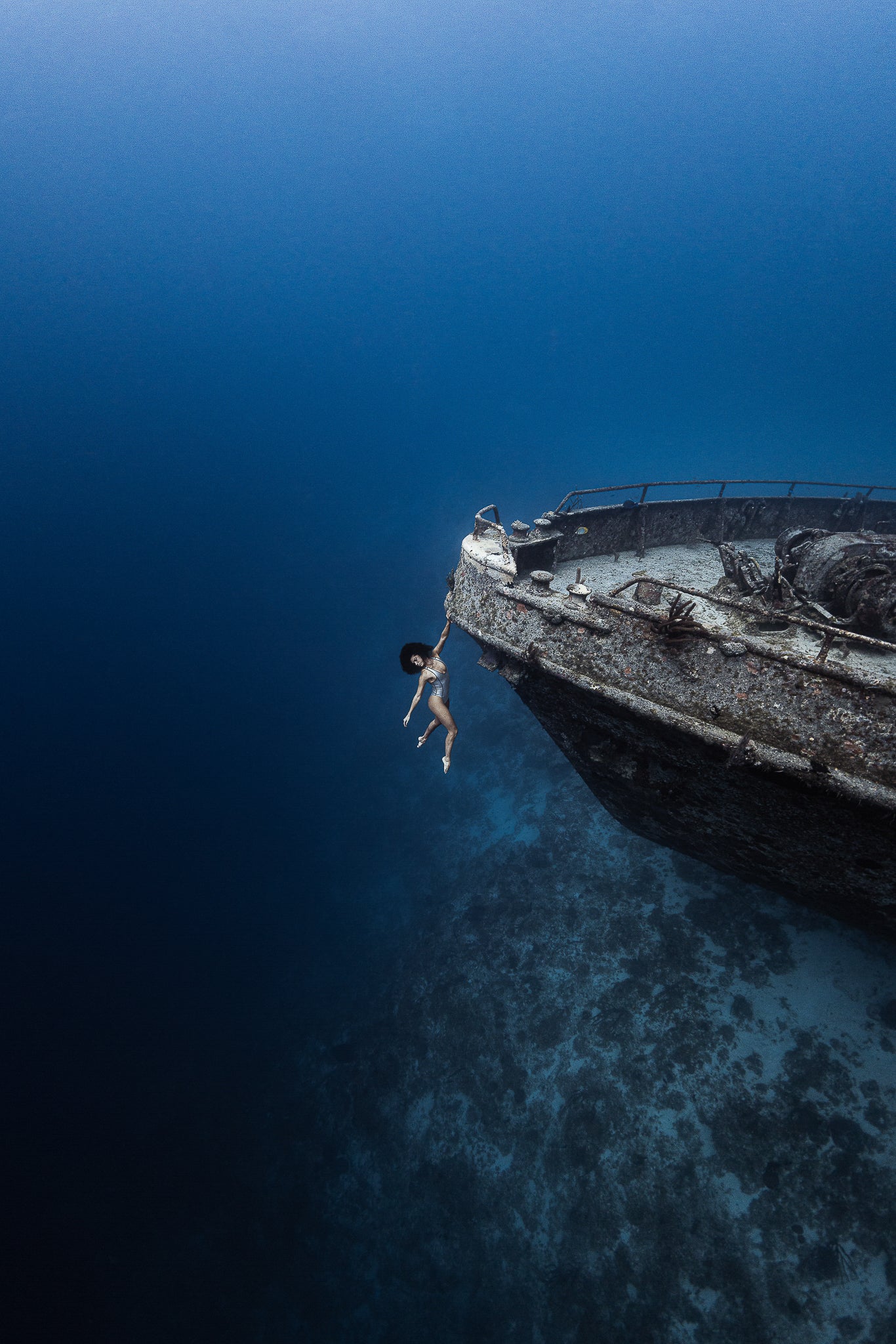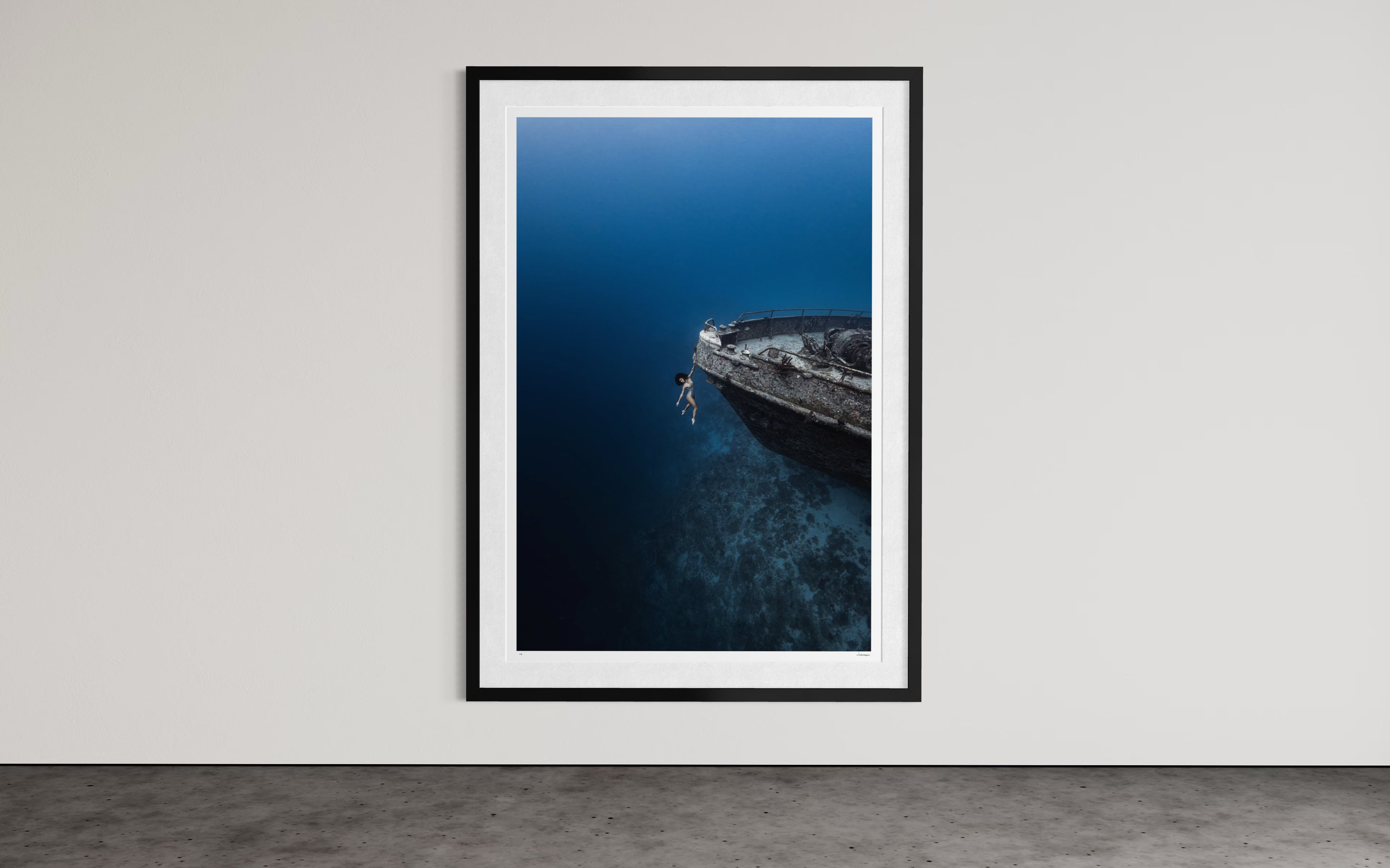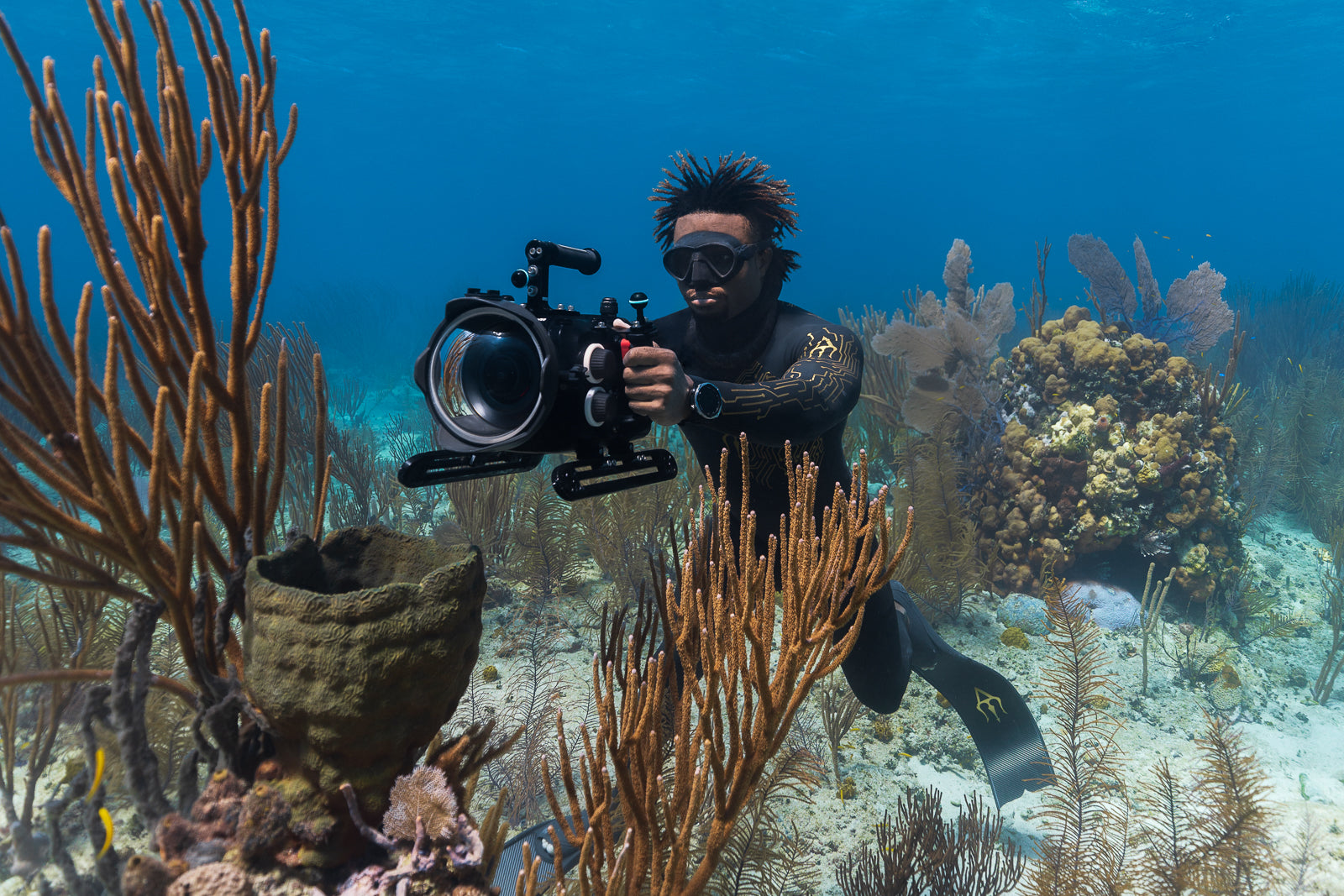





About The Shot
New Providence, Bahamas/ 2022
There were a lot of reasons why this shoot was one of the most challenging—and honestly, one of the riskiest—I’ve done in my career. The goal was to capture an image that shows just how small and vulnerable we really are compared to the raw power of the ocean. No matter how advanced we get, nature still runs the show. I teamed up with my close friend, who is a professional underwater performer, for this dive, and we were working at about 60 feet (20 meters) down. The conditions weren’t ideal. She was in cold water, wearing hidden weights to stay down, no dive mask, and on top of that, there was a strong downward current. We shared one scuba tank—she breathed from my backup regulator (the octopus) as we descended together toward the shipwreck, which drops off into 6,500 feet (2,000 meters) of open blue. Once we reached the spot, she did her breath-up and signaled she was ready. I swam off to get into position, careful not to leave a trail of bubbles that could ruin the shot, and making sure to exhale as I ascended a bit to avoid lung over-expansion. Meanwhile, she stayed completely composed—holding her breath, staying relaxed, pointing her toes, keeping perfect form, and gripping the edge of the wreck like it was nothing. When she was reaching her limit, she signaled, and I swam back to give her the regulator. Between shots, we had a tight routine: I’d pass her the reg and her mask, we’d check the image to adjust pose or angle, and then do it all over again. We repeated that about seven times until we got the final shot and the video we needed. We finished the dive with a 3-minute safety stop at 15 feet (5 meters) and surfaced with a few minutes’ worth of air left in the tank. Both of us are highly trained underwater performers, freedivers and scubadivers, fully aware of the risks involved. We decided with our judgment that we both felt safe with our plan, but it’s crucial to emphasize that we do not recommend or endorse similar high-risk endeavors for others. Safety should always be the top priority in any underwater activity.

